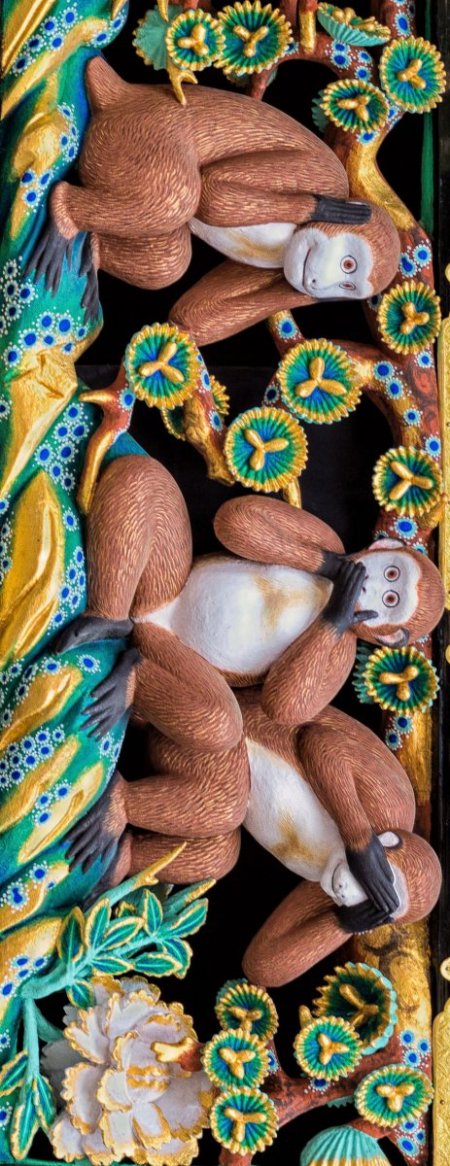
The Three Wise Monkeys, See No Evil, Hear No Evil, and Speak No Evil, are often known these days as popular emojis. Before that they were pop culture cartoons and figurines (and one of the few things Gandhi owned). But before all that they were part of a 17th-century carving at the Shinto Tōshō-gū Shrine in Nikkō, Japan. The monkeys are also part of Buddhist legend, Kōshin practice, and Taoism.
Their exact meanings vary, but one possible origin can be found in 4-2 BCE China in the Sayings of Confucius as "Look not at what is contrary to propriety; listen not to what is contrary to propriety; speak not what is contrary to propriety; make no movement which is contrary to propriety" The monkey part is actually a Japanese play on words for the proverb "see not, hear not, speak not".
So while some people think of the three monkeys as looking the other way or feigning ignorance, we go with the positive interpretation of being mindful of your actions, thoughts, and words.
- Mizaru, who covers his eyes represents "See No Evil". With our mission to challenge stereotypes we encourage people to see beyond their own biases and prejudices and to look at others with a more open-minded and empathetic perspective.
- Kikazaru, who covers his ears represents "Hear No Evil". To find commonality we encourage people to listen to and understand the perspectives and experiences of others, and challenge negative stereotypes and language they hear.
- Iwazaru, who covers his mouth represents "Speak No Evil". We encouraging people to speak thoughtfully and respectfully, rather than spreading harmful stereotypes and prejudices.
Following the original meaning of the Three Wise Monkeys, the poses along with the good deeds people write about, represent how we encourage people to challenge their own biases and prejudices, to listen to and understand the perspectives and experiences of others, and to communicate in a thoughtful way what you've learned.
